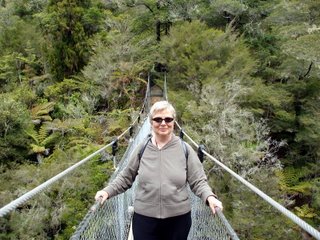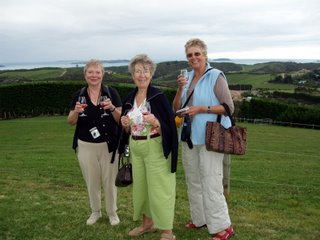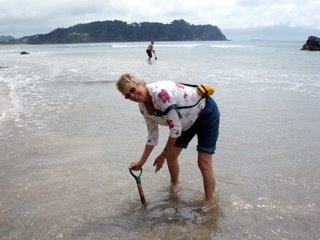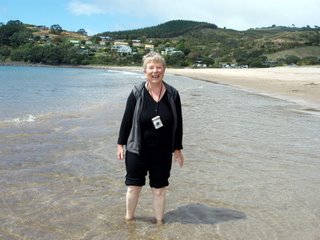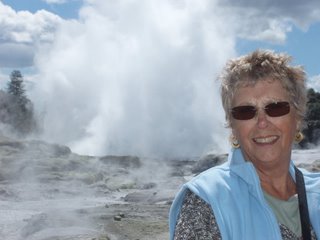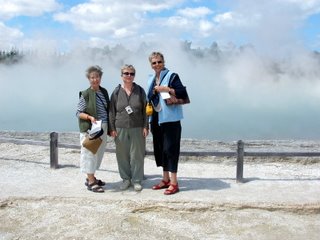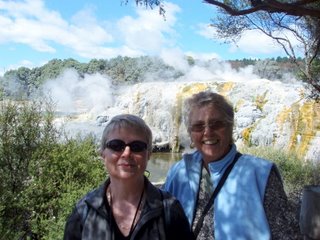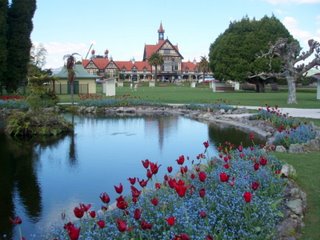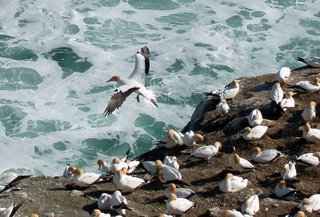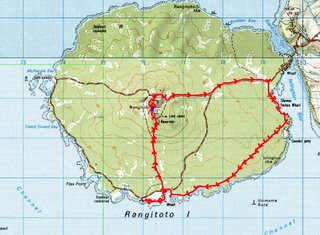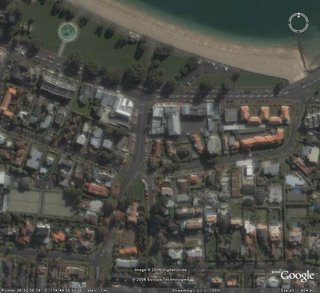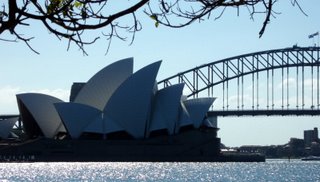
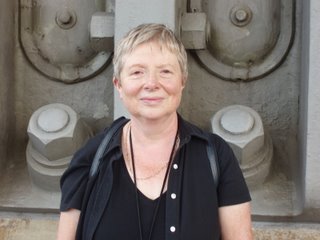
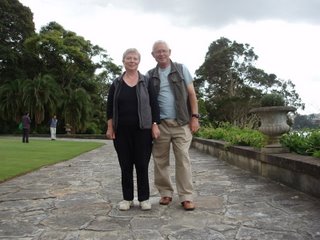
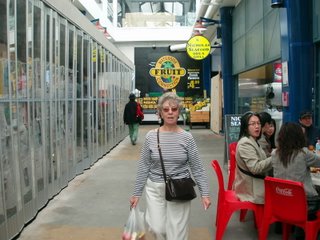
THE SYDNEY BLOG. We flew out of Auckland on Tuesday, 3rd October and arrived at Sydney three hours later, crossing three time zones on the way. I'd always talked about flying up to Sydney, but in fact it is pretty much due west of Auckland, about 1800 km due west (Anne says it was only two time-zones, plus an hour's difference for daylight saving, in force in NZ but not yet in New South Wales). We stopped at the Sir Stamford Hotel at Circular Quay, which is a decent sort of place in Macquarie Street and very convenient for most of the city-centre sights. Circular Quay is where the harbour ferries arrive and depart and is part of Sydney Cove. The opera house is sited on one little headland of the cove and the harbour bridge springs off of the headland opposite, from an area of very early English settlement called
The Rocks. It seems that in days gone by The Rocks was another
Hell-hole of the Pacific along the lines of Russell (see below) but redoubled in spades.
On the Thursday evening we went to see Handel's
Julius Caesar at the opera house. After a shaky start things came together well and the performance was very enjoyable. Castratos are a bit thin on the ground nowadays, so the lead was sung by a counter-tenor, well enough, but on balance I'd have preferred a mezzo. The acoustics of the opera house are good, but the interior of the place is disappointing, pure 80s provincial performing arts centre in style. The opera house is due for an overhaul that should bring the interior into line with what the original designer of the place intended. This can't happen soon enough.
The week that we spent in Sydney was just about long enough to do the things that we wanted to do. On one hot day we took the ferry to Manly, which is a pretty little town with beaches on the harbour side and on the ocean side (the town is on an isthmus). The beaches on the harbour side are family-orientated and the ones on the ocean side are where the big breakers roll in from the Pacific and where the surfers go. We did a couple of very pleasant short walks here. As for museums, well, probably the best of them is the Art Gallery of New South Wales. This has a good collection of recent Aboriginal art, together with works from Europe (16th to 20th Century) and Australia (18th to 20th Century). A couple of good painting by Stanley Spencer too, including
Christ at Cookham and a view of fields near Cookham, looking from what appears to be Strand Castle, towards Maidenhead. We dug these same fields for gravel not so long ago, I think. Also in the Art Gallery of New South Wales, some good Chinese and Korean ceramics. The Australian Museum has a good natural history collection, but it's a very run-down place that desperately need some money spending on it. The Nautical Museum had some exhibits of interest, including a full-scale replica of Cook's ship, the
Endeavour; tiny and solid, it looks as if it would sail like a haystack. The botanic gardens, just round the corner from the opera house, are a fine introduction to Australian and Pacific flora and are not to be missed, especially the hot houses. In a large tree a colony of flying foxes are roosting, hanging upside down from the branches and sometimes squabbling over their places.
On Friday, Anne's cousin Robert and his wife, Gwyneth flew up from Tasmania for the week-end. We met them for dinner on Friday evening at a well-known fish restaurant at Darling Harbour, not far from their hotel. Food excellent and the (Tasmanian) white wine even better. It's good to see old friends again, they were at our wedding in nineteen-hundred-and-frozen-to-death (1968, to be precise) and even though we've seen them since then it was still good to ramble on about old times. Note to myself: send R&G copies of the wedding photos. I amazed myself by remembering what Gwyneth was wearing at our wedding; a willowy blond in a green corduroy dress, hey ho. On the Saturday, Gwyneth and Robert hired a car and took us up to Katoomba Park in the Blue Mountains, where we took a cable-car across a gorge with waterfalls and on to a little walk to a viewpoint overlooking a spectacular wooded valley, all beautiful, with a blue haze (said to be finely-dispersed oil from the eucalyptus trees) over everything. Oh, and on the way to Katoomba we passed through Penrith, home to the famous lakes. Had the old firm won the first prize on Busman's Holiday we would have gone here fifteen years ago, the lakes are water-filled gravel pits, now landscaped and made into Olympic standard rowing trenches. Never mind, we eventually made it under our own steam. On Saturday evening we had dinner at a restaurant on Sydney Cove, near to the opera house, and said goodbye to Robert and Gwyneth, who were flying-out on the next day.
On Sunday we met Sheila and Rosemary, who had just arrived from Brisbane, for dinner at Circular Quay, and had a jolly time. The next day we bumped into them on the Quay and we did a tour of the fish-market, very impressive. After that we split up and Anne and I took a tour of the Maritime Museum. In the evening we met again for dinner at a Thai restaurant in Paddington, near to their hotel. It was BYO, so we stocked-up with a couple of bottles of magic grape-juice before we went in. Food and wine very good, not to mention, also very cheap. Made arrangements with Sheila and Rosemary to collect them from the airport at Auckland on Wednesday, they'll be stopping with us at Mission Control for a couple of weeks, which will include a tour of the central North Island (the boiling-mud places, for example). We flew out of Sydney on Tuesday and had an uneventful trip back to Mission Bay, suffering a little from the three-hour time-shift again.
Now for the pictures, from top. (1) Standard picture of the opera house and part of the bridge; (2) Anne, with a couple of nuts (Dorman-Long's finest, these help to anchor the bridge to the sandstone bed-rock); (3) Nick and Anne in the gardens of the governor's house; and (4) Sheila at the fish-market. Anne has the decent pictures of Robert and Gwyneth, so I'll post a couple of these here, later.


 Even though we're back home now I think I'll keep going and write up the rest of our New Zealand trip, it would be a shame to leave it uncompleted. So, taking up the story at Queenstown, I'll carry on.
Even though we're back home now I think I'll keep going and write up the rest of our New Zealand trip, it would be a shame to leave it uncompleted. So, taking up the story at Queenstown, I'll carry on.




